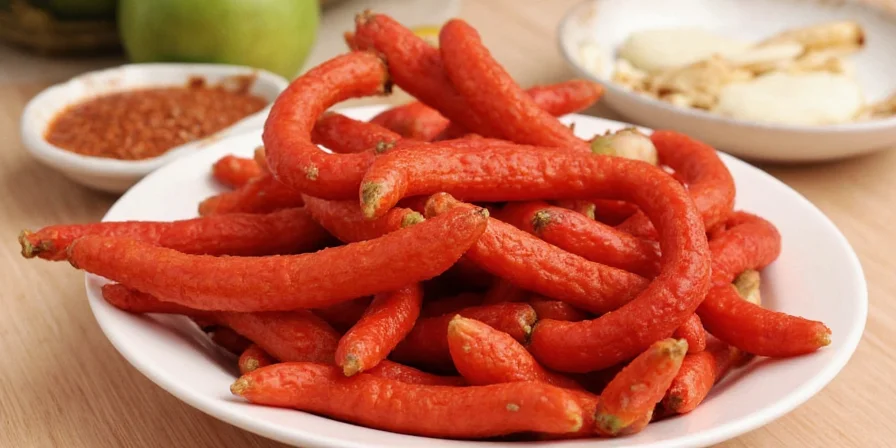7 Surprisingly Spicy Secrets of Hongos Food You Never Knew Existed!
Table of Contents
- What Even Is Hongos Food?
- The Spice Magic Behind Hongos Dishes
- 7 Must-Know Tips for Cooking Spicy Hongos at Home
- Spice Profiles: A Comparison Table
- The Science (and Sizzle) of Heat in Hongos Cuisine
- Common Myths About Spicy Hongos Food—Busted!
- Pro Chef Tips: How to Store & Use Spices Like a Pro
- Final Thoughts: Embrace the Heat, Respect the Fungi
What Even Is Hongos Food?
If you're not from a region where mushrooms are lovingly called "hongos," you might be scratching your head right now. Don’t worry—you’re not alone! In many Latin American countries, "hongos" is simply the local name for edible mushrooms, especially wild or forest-grown varieties.
Hongos dishes have been around for centuries, often used in traditional recipes passed down through generations. But here’s the twist—they don't just add earthy flavor; they love to play with heat too! Whether it's dried chilies tucked under layers of sautéed fungi or a smoky paprika finish, these ingredients team up to create unforgettable flavor explosions.
The Spice Magic Behind Hongos Dishes
Mushrooms might be the star of the show, but let’s give it up for the supporting cast—spices! The way spices interact with mushrooms can either elevate your dish to Michelin-star levels or turn it into a soggy mess of disappointment.
The key is balance. Mushrooms are like sponges, soaking up flavors like a late-night texter soaking up drama. That means every pinch of chili, dash of cumin, or sprinkle of oregano counts double. But fear not—we’ve got the inside scoop on how to make those spices sing instead of scream.
7 Must-Know Tips for Cooking Spicy Hongos at Home
- Toast Your Spices First: Dry-roasting cumin or coriander before adding them releases their essential oils and makes your kitchen smell like a fancy restaurant.
- Use Fresh Chilies for Complexity: Jalapeños offer grassy notes, while habaneros bring tropical heat. Experiment!
- Pair Acid with Spice: A splash of lime juice or vinegar cuts through richness and enhances heat perception.
- Dry-Fry Mushrooms First: Let them get golden and crispy before adding moisture. This builds depth and texture.
- Add Salt Last: Salt draws out water, which can make your hongos soggy if added too early.
- Don’t Overdo It with Garlic: Garlic can easily overpower subtle mushroom flavors unless roasted first.
- Let It Rest: Allow your spiced mushroom mixture to sit for 10–15 minutes before serving. Flavors fuse beautifully when given time.
Spice Profiles: A Comparison Table
| Spice | Heat Level (Scoville) | Flavor Profile | Best Match With Hongos |
|---|---|---|---|
| Jalapeño | 2,500 – 8,000 | Grassy, peppery | Portobello or cremini |
| Habanero | 100,000 – 350,000 | Fruity, citrusy | Shiitake or morels |
| Ancho Chile | 1,000 – 2,000 | Smoky, sweet | Oyster or enoki |
| Guajillo | 2,500 – 5,000 | Leathery, tangy | Porcini or hen of the woods |
| Poblano | 1,000 – 2,000 | Earthy, mild | All-purpose mushroom use |

The Science (and Sizzle) of Heat in Hongos Cuisine
Ever wondered why some spicy hongos dishes hit you like a fireball while others just whisper heat? Blame (or thank) capsaicin—the chemical compound responsible for that burning sensation we call “spiciness.”
Here’s what happens: Capsaicin binds to pain receptors in your mouth, tricking your brain into thinking something hot is touching your tongue. Fun fact: Birds don’t feel this burn, which is why they help spread chili seeds far and wide. Nature’s wild!
In hongos dishes, fats like oil or dairy help dissolve capsaicin, making the heat more mellow and evenly distributed. So if you want your guests to enjoy the dish without tears (unless they're crying happy tears), consider pairing spicy hongos with a creamy avocado sauce or a dollop of sour cream.
Common Myths About Spicy Hongos Food—Busted!
- Myth #1: All mushrooms absorb spice the same way.
Truth: Different mushrooms have different textures and water content, which affects how well they take on spice. Meatier varieties like porcini or shiitake soak it up better than delicate ones like enoki. - Myth #2: More spice always equals more flavor.
Truth: Balance is key. Too much spice can drown out the natural umami and earthiness of mushrooms. - Myth #3: Raw chilies are the only way to go.
Truth: Roasting or drying chilies can unlock complex flavors that raw chilies can’t match.
Pro Chef Tips: How to Store & Use Spices Like a Pro
- Store whole spices in airtight containers away from light and heat to preserve potency.
- Buy whole spices and grind as needed—it makes a world of difference in flavor intensity.
- Label your spice jars with purchase dates. Most ground spices lose flavor after 6 months.
- Make your own chili powder by roasting and grinding dried chilies for a custom blend.
- Keep a “heat journal” of which chilies work best with different mushroom types. You’ll thank yourself later!
Final Thoughts: Embrace the Heat, Respect the Fungi
Whether you’re a spice newbie or a full-on Scoville slayer, hongos food has something special to offer. It’s a delicious dance between earthy fungi and fiery flavor that deserves more attention than it gets.
By mastering a few simple spice tricks and understanding the science behind the heat, you can transform humble mushrooms into a spicy masterpiece. So go ahead—get experimental, get messy, and most importantly, get cooking.
And remember: mushrooms may be silent, but when paired with the right spice, they sure know how to speak volumes!










 浙公网安备
33010002000092号
浙公网安备
33010002000092号 浙B2-20120091-4
浙B2-20120091-4